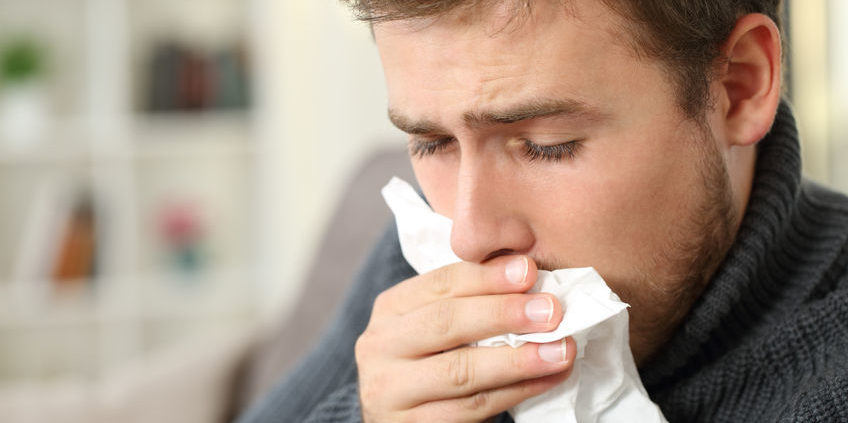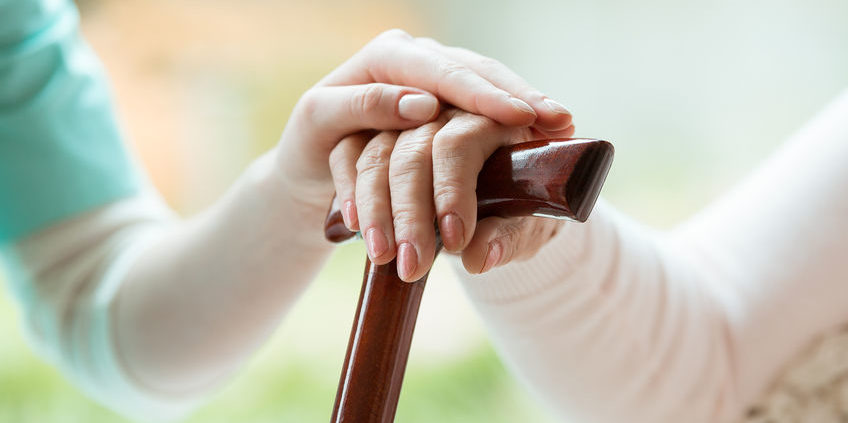Is mold behind your symptoms?
 Mold has been in the news lately because it has been causing significant health impacts on people. Following floods, or in places where a number of people suddenly become very ill, mold is often found to be the culprit.
Mold has been in the news lately because it has been causing significant health impacts on people. Following floods, or in places where a number of people suddenly become very ill, mold is often found to be the culprit.
Mold is everywhere on earth, and grows quickly wherever mold spores find moisture. Outbreaks of mold-induced illness often follow floods, as black mold grows quickly in the soaked, interior spaces after a flood. Mold can also build up in poorly ventilated or poorly maintained air conditioning or heating systems, which then spread more spores through the building.
While not everyone will get sick from mold exposure, those with sensitivity to mold can suffer significant symptoms. These can range from mild allergic reactions, like stuffy nose, irritated throat, coughing, eye irritation, sometimes skin irritation. They can, however, be more severe for those who are more sensitive, or with suppressed immune systems (seniors, those with chronic conditions, obstructive lung disease).
Symptoms of mold exposure
Mold allergies can present flu-like symptoms. They can also present as mood suppression or depression, and have been proven to trigger asthma symptoms. This means these allergies can be hard to detect for doctors with little experience in treating mold. All too often, patients do not get the right treatment for the underlying cause of their symptoms.
Our approach
At Proactive Wellness Centers, our team studies with leaders in mold and other causes of chronic disease, with a differential diagnosis approach.
We start with a thorough range of laboratory tests, for:
- heavy metal exposure
- tick-borne illnesses including Lyme (Borrelia bacterium) and co-infections
- reactivated viruses
With a full picture of your condition — and remember that 50 percent of our chronically ill patients have more than one disease, with more than one cause — we can devise a comprehensive treatment plan to stop the progress of the illness, and then reverse the effects. Next, we focus on developing interventions to maintain the improvement in your wellness.
Control mold
No matter what, we all have a certain amount of mold spores in our homes. It’s important to keep them from growing.
Mold can be black, brown or other colors. It appears as spots in damp areas, and can smell musty. No matter what color it is, you should remove it immediately.
Clean mold with regular soap and water, or use a mild bleach solution of no more than 1 cup of laundry bleach to 1 gallon of water. Dry thoroughly.
Discourage mold from coming back:
- Open your windows for fresh air.
- Regularly ventilate damper areas, like bathrooms, showers, laundry and cooking areas.
- Control humidity, keeping it at no more than 50 percent.
- Fix leaky roofs, windows, pipes, heating, ventilation and air conditioning systems and ducts.
- If your home is flooded for any reason, thoroughly clean and dry it as soon as possible. Replace wet insulation and any carpets that you cannot dry quickly. Clean with mold-killing products, and use paint with mold inhibitors.
Look for the signs
If you have had symptoms of aches, pains, cold or flu or allergies that persist, despite different treatments from various doctors and specialists, you owe it to yourself to investigate the possibility of sensitivity to mold, Lyme or parasites.
If you’re in the northern Virginia, Washington D.C., Maryland or Pennsylvania area, visit or call us about your symptoms.



 There are certain times of the year when we all indulge in sugar (even taking candy from our kids, if we’re being honest). We may go on baking frenzies during the holidays or have a large slice of cake during birthday celebrations. Or perhaps we sneak in an extra nibble or two of the leftover pie after dinner. It’s okay, we all do it. While everything in moderation is best, we should also consider that an extra spoonful of sugar here and there can take a toll — not just on our waistline, but also on our minds.
There are certain times of the year when we all indulge in sugar (even taking candy from our kids, if we’re being honest). We may go on baking frenzies during the holidays or have a large slice of cake during birthday celebrations. Or perhaps we sneak in an extra nibble or two of the leftover pie after dinner. It’s okay, we all do it. While everything in moderation is best, we should also consider that an extra spoonful of sugar here and there can take a toll — not just on our waistline, but also on our minds.




 We need to get beyond the “feel sick, take a pill” approach to health. By taking a proactive approach, we can get healthy and feel better on our own terms without turning to drugs and expensive therapies.
We need to get beyond the “feel sick, take a pill” approach to health. By taking a proactive approach, we can get healthy and feel better on our own terms without turning to drugs and expensive therapies.
 Strong and capable. That’s the image many young men like to present to the world. But all too often, that image interferes with a man’s willingness to recognize he has health problems.
Strong and capable. That’s the image many young men like to present to the world. But all too often, that image interferes with a man’s willingness to recognize he has health problems.
 How can you tell when a child is sick, and needs to be seen by a healthcare provider? It’s a very real concern for many parents. Sometimes a child is too young to tell you when they’re ill, or don’t know yet how to tell you what’s wrong. To make matters even more complicated, symptoms can sometimes be confusing.
How can you tell when a child is sick, and needs to be seen by a healthcare provider? It’s a very real concern for many parents. Sometimes a child is too young to tell you when they’re ill, or don’t know yet how to tell you what’s wrong. To make matters even more complicated, symptoms can sometimes be confusing.
 Did you know that cardiovascular disease kills more people in America than all types of cancer combined? As the leading cause of death in the United States, cardiovascular disease is a health concern for many (as it should be). If you’re looking for ways to reduce your risk for heart issues like heart attacks, you’ve come to the right place. Here at Proactive Wellness Centers, preventing cardiovascular diseases is one of our biggest focuses, starting with these six steps.
Did you know that cardiovascular disease kills more people in America than all types of cancer combined? As the leading cause of death in the United States, cardiovascular disease is a health concern for many (as it should be). If you’re looking for ways to reduce your risk for heart issues like heart attacks, you’ve come to the right place. Here at Proactive Wellness Centers, preventing cardiovascular diseases is one of our biggest focuses, starting with these six steps.
 As our loved ones get older, it’s natural to begin to worry about their health. And with someone new developing
As our loved ones get older, it’s natural to begin to worry about their health. And with someone new developing 
 Have you heard of the plant Cistus Incanus? The plants in this genus have powerful properties that fight many of the harmful pathogens that can negatively impact the human body and cause health problems.
Have you heard of the plant Cistus Incanus? The plants in this genus have powerful properties that fight many of the harmful pathogens that can negatively impact the human body and cause health problems.